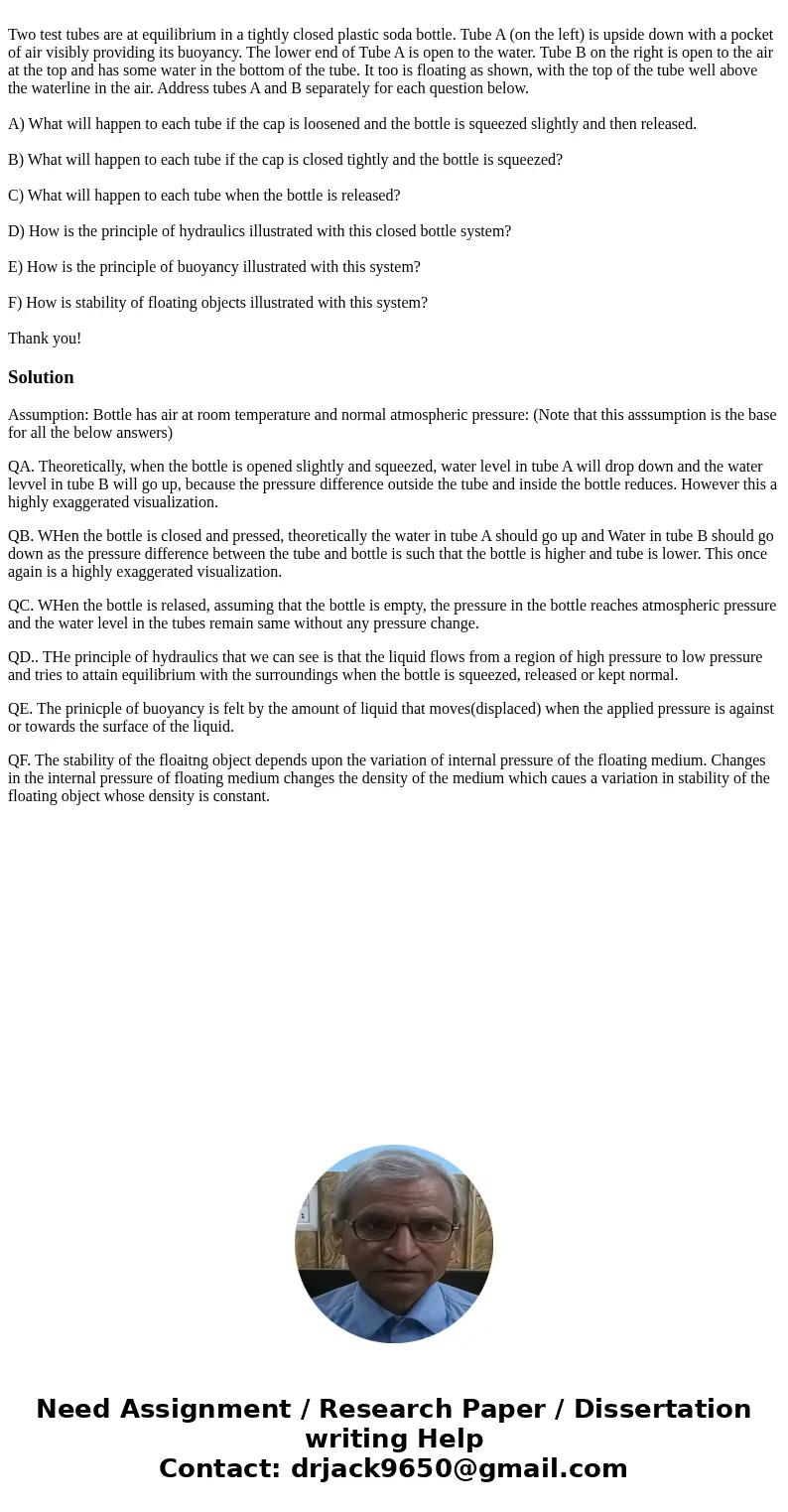Two test tubes are at equilibrium in a tightly closed plasti
Solution
Assumption: Bottle has air at room temperature and normal atmospheric pressure: (Note that this asssumption is the base for all the below answers)
QA. Theoretically, when the bottle is opened slightly and squeezed, water level in tube A will drop down and the water levvel in tube B will go up, because the pressure difference outside the tube and inside the bottle reduces. However this a highly exaggerated visualization.
QB. WHen the bottle is closed and pressed, theoretically the water in tube A should go up and Water in tube B should go down as the pressure difference between the tube and bottle is such that the bottle is higher and tube is lower. This once again is a highly exaggerated visualization.
QC. WHen the bottle is relased, assuming that the bottle is empty, the pressure in the bottle reaches atmospheric pressure and the water level in the tubes remain same without any pressure change.
QD.. THe principle of hydraulics that we can see is that the liquid flows from a region of high pressure to low pressure and tries to attain equilibrium with the surroundings when the bottle is squeezed, released or kept normal.
QE. The prinicple of buoyancy is felt by the amount of liquid that moves(displaced) when the applied pressure is against or towards the surface of the liquid.
QF. The stability of the floaitng object depends upon the variation of internal pressure of the floating medium. Changes in the internal pressure of floating medium changes the density of the medium which caues a variation in stability of the floating object whose density is constant.

 Homework Sourse
Homework Sourse